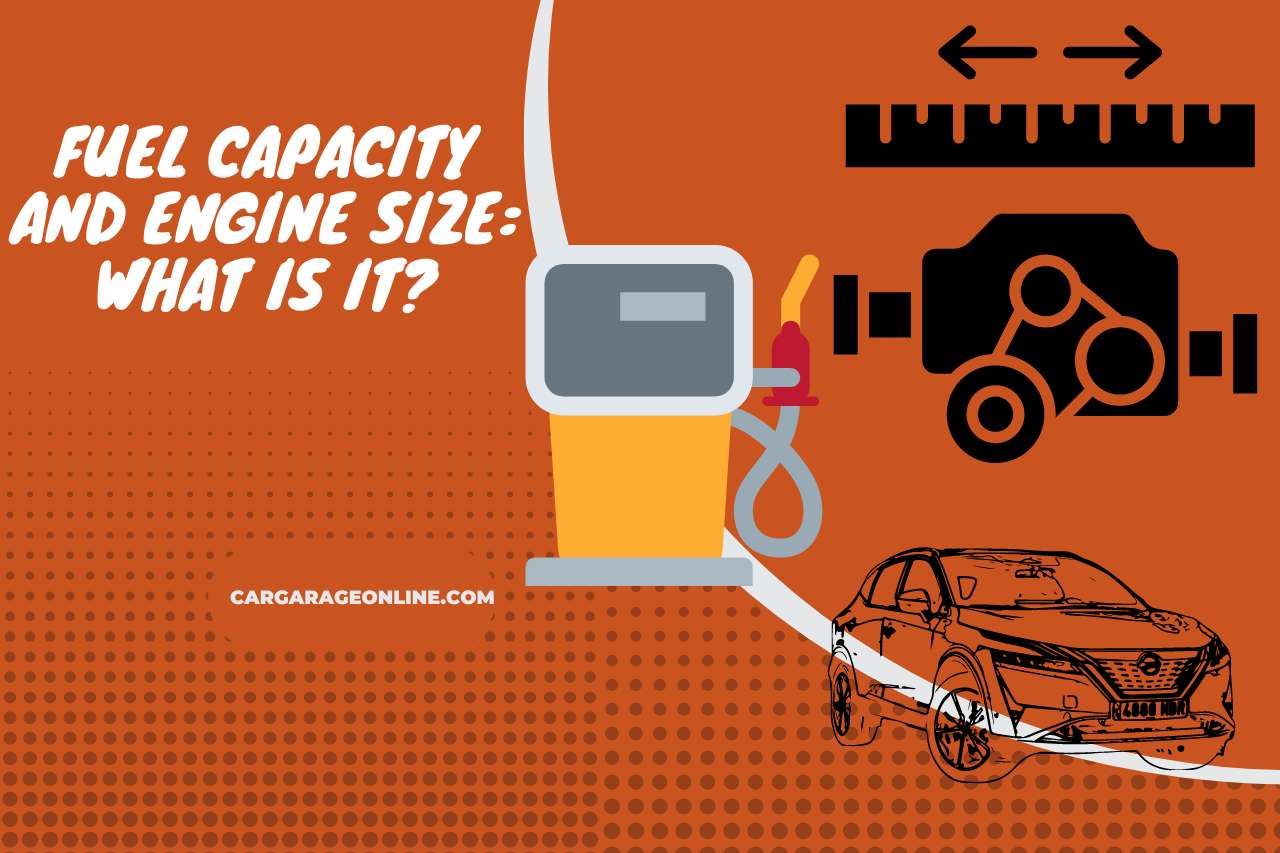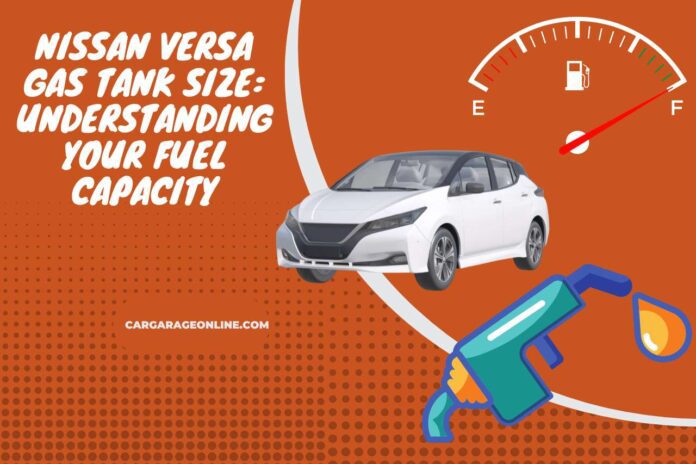The gasoline light on your automobile turns on to serve as a reminder to fill the tank. Many motorists find it inconvenient and decide against refilling before traveling a short distance. Some people panic and rush to the nearest petrol station right away. What does ‘Nissan Versa Gas Tank Size’ mean?
To prevent harming the vehicle’s engine or feeling pressured, all motorists should be aware of the gasoline tank capacity.
What Does Knowing the Volume of a Gasoline Tank Mean?
You can better understand how your automobile operates and how to take care of it to avoid harm by finding out how much gas it can hold. Understanding it also makes it easier to calculate the car’s fuel economy as you get ready for a journey or perhaps as you pick which automobile to buy.
Knowing how much gas your tank can hold can help you control your gas costs as gas prices continue to rise. It also enables you to become more conscious of your car’s requirements.
Fuel Capacity and Engine Size: What is it?
The combustion chamber gets bigger since there is more room within for fuel and air. The size of the motor will be estimated using the volume (the quantity of space) in its cylinders. In order to produce the energy needed to turn the wheels, a combination of gasoline and air ignites them.
The whole volume of the engine is what defines its size. In a gasoline engine, there can be anything from two to twelve chambers. Even vehicles with 16 cylinders have been sighted. The higher values, on the opposite together, are typically associated with powerful UTEs as well as supercars.
In broad terms, your automobile will use less gasoline if it has a smaller engine since a smaller motor has a lower capacity. Let’s examine the typical size of gasoline tanks based on the engine’s dimensions to give you a better idea.

The capacity of a two-cylinder vehicle’s gas tank
About 11–12 gallons of gasoline may be found in a two-cylinder automobile.
The capacity of a four-cylinder vehicle’s gas tank
The gas capacity of a four-cylinder automobile is 14–15 gallons.
Fuel Tank Size for a Six-Cylinder Vehicle
A six-cylinder car typically has a fuel capacity of 15 to 16 gallons.
Size of an eight-cylinder vehicle’s gasoline tank
Typically, an eight-cylinder vehicle can store 16 gallons of fuel or more.
Nissan Versa Gas Tank Size
The 10.8-gallon gasoline tank is standard across all model levels within the Nissan Versa. It has a CVT transmission as standard equipment, and the EPA estimates that it achieves a combined 35 mpg owing to 32 mpg in urban areas and 40 mpg on highways. These figures are among the best in their class and are capable of cruising without having to consider frequently stopping at petrol stations.
The Nissan Versa will add excitement to your everyday commute. The appealing and reliable automobile ranks among the very best in the marketplace for fuel efficiency, especially while traveling on highways. A 7.0-inch touchscreen is standard on the Versa. Apple CarPlay, as well as Android Auto, are only available on the SV as well as SR variants, though. Along with a surprising number of basic driver-assistance features, the Versa additionally comes with automated high lights and lane-departure warnings.
Nissan Versa 2022
According to the car’s specification choices and trim straight, the 2022 Nissan Versa’s fuel tank capacity is 10.0 gallons.
Nissan Versa 2021
According to the model choices and trim straight, the 2021 Nissan Versa’s petrol tank capacity is 10.0 gallons.
Nissan Versa 2020
According to the model choices as well as trim level, the upcoming 2020 Nissan Versa’s tank gasoline capacity is 10.8 gallons.
Nissan Versa Gas for 2019
According to the model choices and equipment straight, the 2019 Nissan Versa’s petrol tank capacity is 10.8 gallons.
Nissan Versa year 2018
Depending on the model choices and trim level, the 2018 Nissan Versa’s petrol tank capacity is 10.8 gallons.
Nissan Versa year 2017
The 10.8-gallon petrol tank of the 2017 Nissan Versa varies based on the trim grade as well as model choices.
Nissan Versa, model year 2016
Based on the customization level as well as model choice, the 10.8-gallon petrol tank capacity of the 2016 Nissan Versa.
Nissan Versa model year 2015
Based on the model grade as well as model choices, the 2015 Nissan Versa’s petrol tank holds 10.8 gallons.
Nissan Versa model year 2014
The 10.8-gallon petrol tank of the 2014 Nissan Versa varies based on the trim grade and model choices.
Versa 2013 Nissan
Whichever of the model choices and equipment level, the new 2013 Nissan Versa’s petrol tank capacity is 10.8 gallons.
Versa 2012 Nissan
According to the trim grade and model choices, the 2012 Nissan Versa’s petrol tank can hold 10.8 to 13.2 gallons of fuel.
Versa 2011 Nissan
With a variety of model choices and trim levels, the 2011 Nissan Versa’s petrol tank capacity is 13.2 gallons.
Versa 2010 Nissan
According to the car’s specification choices and trim level, the 2010 Nissan Versa’s petrol tank capacity is 13.2 gallons.
Versa 2009 Nissan
Based on the model level as well as model choices, the fuel tank capacity of the 2009 Nissan Versa is 13.2 gallons.
Versa 2008 Nissan
Depending on its trim level as well as model choices, the 2008 Nissan Versa has a 13.2-gallon petrol tank.
Versa 2007 Nissan
The fuel tank capacity of the 2007 Nissan Versa is approximately 13.2 gallons, based on the model as well as trim level choices.
Hints To Increase Fuel Efficiency
We offer some advice to assist your drivers in reducing their fuel use and getting a few more miles out of their gasoline or diesel.
Regularly monitor the pressure in your tires since under-inflated tires can reduce fuel efficiency by as much as 2.5%.
Take away any extra tools, stock, passengers, or apparatus that isn’t needed for the trip to reduce the amount of weight.
Do your best to limit the use of air conditioners, heated windshields, and other electrical devices.
Light gear changes, light braking, and gentle acceleration. Avoid abrupt braking and accelerating.
When feasible, avoid idling and employ vehicle stop/start equipment. Consider stopping the engine if you will be waiting for a while.
Consider the state of the roads and continue traveling when you can. Saving gasoline involves avoiding a full stop.
Maintain all car repairs, including routine oil, water coolant, and additional fluid top-offs.
In order to save gasoline, drivers ought to be instructed on how to run their automobiles efficiently.
Here’s An Interesting Video To Watch,
VIDEO CREDITS: Round Rock Nissan YouTube Channel
You May Also Like:







![What Is The Best Penetrating Oil For Seized Engine? [Explained] Best Penetrating Oil For Seized Engine](https://cargarageonline.com/wp-content/uploads/2022/07/Best-Penetrating-Oil-For-Seized-Engine-100x70.jpg)